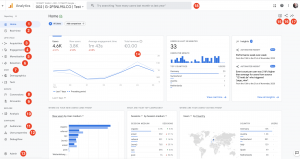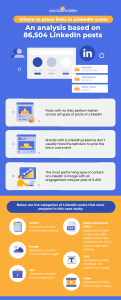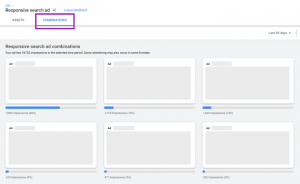
Your cart/checkout page is likely the #1 place on your website where you are leaking potential sales. The average rate for cart and checkout abandonment across e-commerce is around 70%. About 7 out of 10 shoppers will leave your website with items in their cart or during the checkout process. Think about all the lost revenue!
There are a few common reasons to why shopping cart abandonment happens but in this post, we’ll focus on several ways that you can track and analyze your checkout process to identify conversion optimization opportunities. Let’s get into it!
Tracking Cart Abandonment for Optimization Purposes
Tracking cart abandonment should be a high priority for your e-commerce business. The most effective and comprehensive way to do track the cart and checkout process is to set up a bunch of small actions (goals) to track within your checkout process:
- Customer clicked on checkout
- Customer reviewed the billing summary
- Customer filled out name and address
- Customer filled out payment info
- Customer completed checkout and paid
- Etc…
You should also track the time it takes your visitor to complete each step. This way you’re able to identify which steps of the process are bleeding potential sales.
By segmenting your checkout process you will be able to identify the steps where you are losing customers and fix them.
Here’s a goal flow chart within Google Analytics that shows your funnel steps and the key drop off points of your checkout process.

For context, here are a couple of example scenarios:
Your checkout form is too long and many customers are having trouble with it.
This causes your average checkout time to be 8 minutes! A simple addition of the option to copy the billing address to shipping address and the elimination of a few unnecessary fields and your checkout time is cut in half.
Your shipping prices are too steep causing shoppers to leave for competitors
By setting up your goals you notice that 40% of the people who make it to the shipping step stop there and abandon the checkout process. You implement some promotions for free shipping and provide a free but much longer shipping option on orders above 100$ . This is identifying a need and meeting that need at its finest!
How to Setup a Checkout Funnel in Google Analytics
A lot of e-commerce businesses still use the multi-page checkout process but the industry, as a whole, is moving to a single page fast checkout.
If you’re currently using a multi-page checkout process, here’s a guide to set up the basic checkout funnel in Google Analytics. This article will show you the process of setting up goals and funnels within Google Analytics. This process can be used to track other visitor behavior on-site as well!
For more advanced use cases, check out this article which features a variety of use cases for conversion funnels.
Checkout Optimization Ideas
So far, this article has provided you with the resources to identify problems within your checkout process. Once you’ve identified where your checkout process is leaking sales, you need some solutions. Here are 5 different modifications and solutions to increase ecommerce sales conversion and combat cart abandonment.
Offer a Guest Checkout Option

Guest Checkout on Century 21
Consumers have a fear of commitment when it comes to purchasing online. The last thing that certain shoppers want to see is the requirement to create an account with your website.
Eliminate the chance of potentially frustrated shoppers by providing a guest checkout option. This allows you to cater to all types of shoppers, even the ones who are afraid to commit to a long term relationship with your brand.
Consolidate the Checkout Process to One Page

One page checkout on Bellroy
While this should be tested to see if it’s a good fit for your store, the logic behind a one page checkout makes a ton of sense. Every additional page during the checkout allows for more opportunity for a shopper to abandon their cart.
Including all checkout information and fields on one page simplifies and shortens the checkout process which should lead to a higher conversion rate.
Remove Unnecessary Fields
What is more important? Capturing a bunch of shopper information or converting a sale? I’ll take a sale any day of the week. Don’t bombard shoppers with unnecessary fields during the checkout process.
Eliminate any fields that are not absolutely necessary for the sale to go through. This gets rid of any questions that may arise while checking out. If a shopper has any doubts about providing certain personal info, they will most likely abandon their cart.
Offer a Variety of Payment Methods
People pay in a variety of ways so to maximize sales, you must provide different ways of paying. Some trends we’re seeing lately are payment plans, more credit card options, and even Bitcoin payment.
If you’re serving people in different countries, check out GoInterpay, a solution that allows you to accept payment from consumers located all around the world!
Exit Pop Ups to Reduce Cart Abandonment

Cart abandonment exit pop up on Sivana Spirit
A common tactic for reducing cart abandonment and optimizing the bottom of the funnel is exit pop ups the cart and checkout pages. This urges shoppers to checkout by presenting a promo code at a key moment in the purchasing process.
By using these techniques people are usually able to reduce their cart and checkout abandonment rates to 40-55% from about 70%. That’s a 50%-100% increase in sales!
If you want to learn more about this tactic check out this sales conversion case study.
Digital & Social Articles on Business 2 Community(51)





